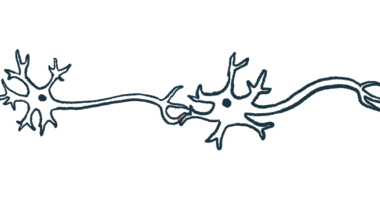Breathing Tests Could Tell Which Kids Might Need Ventilation, Study Says

Need for ventilation support is common among children with spinal muscular atrophy (SMA), and those who are older and with more abnormal breathing seem to be at greater risk, an Australian study suggests.
Researchers have now defined a range of values for breathing function that may tell which children are at greater risk of breathing difficulties during sleep or those who are likely to need a ventilator during a respiratory infection.
These and other ways to predict the need for ventilation might also help set up guidelines for respiratory care in SMA.
The study, “Relationship between respiratory function and need for NIV in childhood SMA,” was published in the journal Pediatric Pulmonology.
People with SMA often have very weak intercostal muscles (those that support the chest wall), compromising their normal breathing. Breathing problems are the most common cause of illness for children with SMA, as they can lead to complications and eventually respiratory failure. This can include weak or underdeveloped lungs, greater risk of respiratory infections, aspiration of food or drink, and hypoventilation (shallow breathing), especially during sleep.
In severe cases, patients may require breathing support such as non-invasive ventilation (NIV), a ventilator that does not require intubation.
Do you use Spinraza? Join our forum and share your experience with other patients and caregivers.
Children with SMA type 1 — the most severe form of the disease — typically have respiratory failure within the first year of life, while those with type 2 and type 3 have a variable course. Most with type 2 will have either intermittent respiratory failure due to infections or chronic failure requiring long-term nocturnal NIV.
Contrary to other neuromuscular diseases, respiratory function is not well-described in patients with SMA. This gap in knowledge has become particularly relevant due to greater availability of non-invasive ventilation and newer disease-modifying medications such as Spinraza (nusinersen) or Zolgensma (AVXS-101).
In this study, researchers evaluated the breathing function of a group of 25 children with SMA (ages 0‐18 years), and assessed differences between those who used NIV and those who did not.
Three children had SMA type 1, 15 children had SMA type 2 and seven patients had SMA type 3. All were enrolled at the Children’s Health Queensland (CHQ), in Australia.
Participants did several breathing function exams, including polysomnography or sleep study, spirometry, forced oscillation technique (FOT), lung clearance index (LCI), sniff nasal inspiratory pressures, peak cough flow, and maximal inspiratory and expiratory pressure.
Although some exams could be not performed by younger children, spirometry and FOT were feasible to toddlers as young as 3.
The results showed that the need for non-invasive ventilation was common among children with SMA. Ten children (40%) required ventilator support — five patients due to sleep-disordered breathing (SDB), and another five due to lower respiratory infections (lung and airways).
In general, children requiring NIV tended to be older (median age 10.52 years) than those who did not (median age 5.67 years). Their breathing function also was poorer, with worse forced vital capacity (FVC) scores (which measure how much air a person can exhale), respiratory resistance scores and lung clearance indexes (a measure of lung health derived from multiple breath washout tests using a tracer gas).
This supported researchers’ hypothesis that children requiring ongoing NIV generally have more abnormal breathing function when compared with those not requiring NIV.
Only two children from the group of 25 had normal respiratory function and no breathing difficulties during sleep.
Children with FVC z‐scores lower than −2.5 were 10 times more likely to require NIV, and those with a lung clearance index greater than 7.5 were twice as likely to need ventilation, compared to children outside this range.
These children should be considered at higher risk of needing NIV, and should have a sleep study to determine whether they have difficulties while asleep and during a respiratory infection, researchers stressed.
During sleep studies, the level of FVC scores and lung clearance indexes were associated with the levels of maximum transcutaneous carbon dioxide (CO2). This is an all-night measure of the body’s CO2 levels to detect breathing insufficiency during sleep.
“With the recent availability of [Spinraza] in many countries, it will be important to assess the influence of [Spinraza] on [respiratory function] carefully in children with SMA. Forced vital capacity and [lung clearance index] should be considered important [respiratory function] parameters to include in these studies,” the researchers said.







